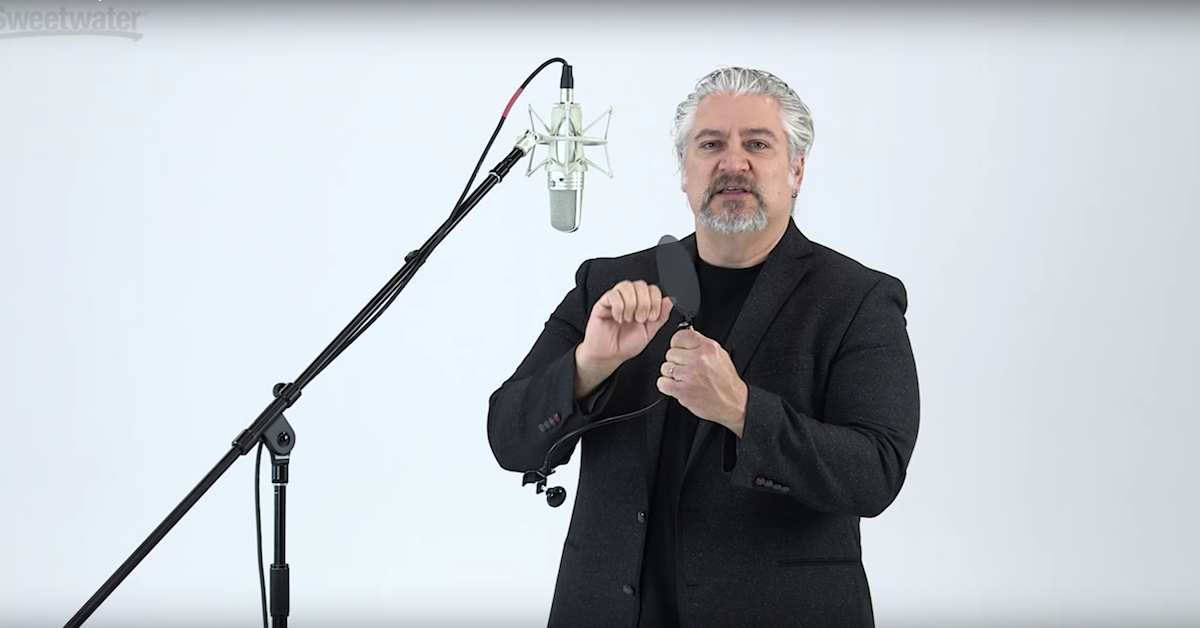5 Things to Know About Proximity Effect
Article Content
Proximity effect is something that’s fairly complex in principle but pretty simple in practice.
1. How It Works
The basic explanation is this — in a directional mic, a signal is generated through the difference in pressure between the front of the diaphragm and the back of the diaphragm. If the pressure on each side is the same, the diaphragm doesn’t move. When is equal pressure exerted on both sides of the capsule? When the sound is coming in completely off-axis. If the pressure on each side is very different, the diaphragm reacts and moves. When is there maximum pressure difference? When the sound is directly in front or directly behind the capsule. There it is, directional microphones.
But does total pressure on the diaphragm stay the same across the frequency spectrum? Unfortunately, no. There is distance between the front of the diaphragm and the back. It’s not a lot of space, but when we’re talking about sound waves — which move very fast — short distances can still account for a lot! Because lower frequencies move through their period at a slower rate, they exhibit less total change in pressure over distance. High frequencies, on the other hand, change in amplitude much faster and exhibit a larger pressure change over short distances.
That means that higher frequencies create a greater pressure differential on a directional microphone. So to compensate for that, mics are built with circuits that roll off top end.
Here’s the trick: at reasonable distances, most of the pressure on the diaphragm comes from the pressure system inside the capsule. However, when the source is very close to the capsule, the actual SPL from the source becomes a greater influence on the total pressure on the diaphragm. Sound pressure does not behave the same way as the differential pressure in the capsule. It’s simple: louder sound equals greater pressure, regardless of frequency. Once that takes effect, the circuit that rolls off top end ends up over-darkening the source, creating the effect of more bass. Proximity effect.
2. Omnidirectional = No Proximity Effect
There’s a little debate on this. A true omnidirectional mic does not rely on the pressure system to reject side signal, and so there’s no need for a compensating high-frequency roll-off. Real omnis do not exhibit proximity effect. Switchable pattern mics effectively use two capsules to create different polar patterns. With both capsules engaged — in theory — the directional pressure in one capsule should directly cancel the directional pressure in the other. This switch to omni should also disengage high-frequency roll-off. If there’s no roll-off there’s no proximity effect, but there seems to be some debate on this.
3. Proximity Effect Can Be Useful
When the source sound is relatively stable in positioning, proximity effect acts basically like an EQ. In fact, it’s more or less the result of an EQ. By finding the right mic placement within the close proximity field we can roll-off undesirable top end, or essentially, push up a bit of bass. This is great on thin or overly bright sources.
4. Proximity Effect Can Be Detrimental
However, the opposite is true as well. Certain sources can get overly boomy very fast if the mic is placed too close. Acoustic Guitar is really the number one offender here. That soundhole kicks out a lot of low energy and will overwhelm a mic placed too close. If you want to put the mic near the soundhole I recommend using an omni mic — no proximity effect, and you capture more of the pick, string, and bridge tone.
The other time proximity effect can be a real problem is if you have a moving source. Vocalists, in particular, are a common culprit here. If the vocalist is moving back and forth, the tonal response of the mic will change. If this is really problematic and you’re in an iso booth, switching to omni can work. Another choice is to move the pop guard out far enough that the vocalist can’t sway into the close proximity range.
5. Different Mics = Different Degree of Effect
Mics all handle proximity differently. As a general rule of thumb, the more directional a mic, the more pronounced the proximity effect will be. Ribbon microphones are a serious culprit here, and they have the most pronounced effect. Anything bi-directional will be pretty strong. Cardioids are next in line. And as mentioned before — Omnis exhibit no proximity effect at all. Anything with a variable polar pattern will be subject to this reality: the closer to omni you go, the less proximity effect — the tighter the polar pattern, the greater proximity effect.
When all is said and done, as engineers we need to consider all aspects of our microphone choice and placement. Meaning we need to be wary of how the total amplitude will affect our signal chain. We need to be aware of how reverberant our recording space is. We need to be conscious of how our source sounds to begin with. And we need to conscientious of how the microphone’s proximity effect will come into play. Being aware of all of these aspects will allow us to find the perfect placement and polar pattern for our subject.





